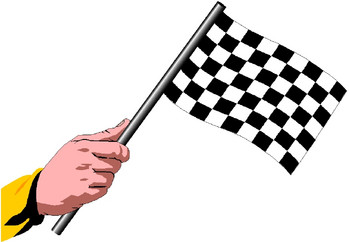Thermal Station MATH 3.2: Thermal Systems in Health
Working with Graphs
- Module Goal: To manage and interpret data represented in graphs.
- Materials Required: Computer with fast Internet connectivity
- Applied Objectives: In completing this unit, you will -
- Define different types of graphs.
- Identify the purpose of different types of graphs.
- Identify trends expressed in graphs.
- Plot trends in line graphs.
- Plot information in a bar graph.
- Represent information in a pie chart.
- Interpret legends.
- Convert data among different types of graphs.
- Pre-requisite knowledge: 6th-grade reading level and arithmetic skills.
- Applied Terminology: All terminology for this module is covered in the PowerPoint presentation
- Evaluation: Projects submitted in this module will be evaluated by rubrics, quizzes, or completion. A rubric is a table that shows you what you are being grade on. A rubric states exactly what is expected of you at different levels.
Reflect on What You Know
In the Thermal Station 3.2, you plotted out your temperature sensations on a grid, which is really just a special type of graph. Graphs are visual representations of information. If you wanted to, you could create a graph to show weather changes over a period of time; you could graph differences in how much you spend every month or year; you could graph changes in weight gain or weight loss, the growth of a child, and much more. Click on the link below to practice graphing, a very useful skill!
- What do you think of when you hear the work "graph?"
- Do you prefer to see information (data) in a visual form or in words?
- How many types of graphs can you think of?
- Why do you think there are different types of graphs.
- What kinds of information could you show in a graph from your personal, everyday life?
Introduction to Graphs and Graphing
Graphs are visual representations of information. If you wanted to, you could create a graph to show weather changes over a period of time; you could graph differences in how much you spend every month or year; you could graph changes in weight gain or weight loss, the growthof a child, and much more. Click on the link below to practice graphing, a very useful skill!
BEFORE YOU START – Print the following worksheets. You will fill out the Lesson Answer Sheet as you go through the presentation and are asked to complete practice problems. The next three worksheets are to be completed for the “Review and Practice” at the end of the PowerPoint:
- Lesson Answer Sheet
- Line Graphs Activity Handout
- Bar Graphs Activity Handout
- Pie Charts Activity Handout
Now open the Mechanical Station MATH 3.2 PowerPoint presentation, Working with Graphs from the link below. Examine and reflect on the information on each slide and complete the activities. Turn in your handouts to your coach when you are done.
Working with Graphs Power Point Presentation
After you have completed the PowerPoint and all three worksheets, print out and complete the quiz:
You can view this lesson’s grading rubric by clicking on the link below:
_____________________
You have completed this station! Congratulations. You are ready for the next one! If you haven't completed both thermal stations, consider doing that before going into the next system.

Links to Station 3.2 Modules
Lab Intro | Lab Presentation and Practice | Communications Intro| Communications Presentation and Practice| Math
